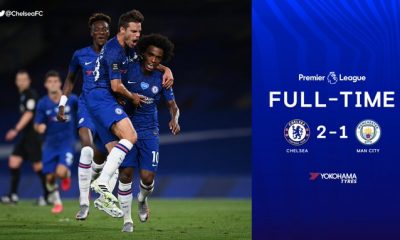Sports
Premier League Transfers
 The premier league is a business football centered business but a business nonetheless. Whenever the league mentions the words “Transfer Window”, there is a flurry of activity in the media, on the socials and soccer fans lips. Incredible amounts of transfer between clubs just as players do the same.
The premier league is a business football centered business but a business nonetheless. Whenever the league mentions the words “Transfer Window”, there is a flurry of activity in the media, on the socials and soccer fans lips. Incredible amounts of transfer between clubs just as players do the same.
Once this window closes, the analysts’ questions the prices paid for players as their performance comes into question or the goals and assists are not forthcoming. If all this were a criterion to place a bet on premier league at 10bet, then betting would be a headache.
Let us break down this transfer window period and understand what all the fuss is really about.
What Is a Transfer?
A transfer in football happens when a player transfers from one club to another before the term of their contract has expired. The new club then pays the old one a compensation fee, which is the transfer fee. This fee compensates the old club for the lost future revenue they would have generated from that player.
If this sounds a tad bit complicated, then try EPL betting at 10bet Zambia, where transfer means you are transferring funds into your account so you can place a bet or transfer your winnings out of the account.
When Is the Transfer Window?
There are two transfer windows, one pre-season window, which happens before a new season starts and one that happens mid-season. The same months and dates then differ for the different Football Leagues globally, but most countries align them with the EPL to facilitate smoother transactions.
Clubs can still sign players as free agents after the deadline, provided the player is not officially attached to any club.
Who Gets the Money?
Every transfer window we see and hear of ridiculous amounts paid and received by clubs, headlines scream 222 million euros for Neymar and such. So who gets all this money?
The large sums of money we see thrown about go to the player’s old club; the new club fulfils the buyout clause in the contract the player had with the old club. The player, agent and other people involved in the transaction will get a share from a single payment. In the Neymar example above, the 222 million euros were paid by PSG straight to Barcelona and then Neymar, his agent and others shared an estimated 45 million euros amongst them.
Then, lawyers, players, and agents sit down and draw up new contacts, including salaries, bonuses, and image rights. Image rights are interesting because everybody wants them, and nobody is willing to give up their share. Image rights mean who controls how a player appears in advertising and publicity. Usually, they end up being split 50/50 because they are quite lucrative on their own.
Salaries
Footballers earn some of the biggest paychecks in sport and life generally. Which kind of explains their lavish lifestyles and splurges. These are just some of the highest numbers in the payroll department of some football clubs.
In no particular order (annual salaries):
- Jack Grealish – Midfielder
Manchester City – 15,600,00 pounds
- Raphael Varane – Defender
Manchester United – 17,680,000 pounds
- Christiano Ronaldo – Forward
Manchester United – 26,520,000 pounds
- Romelu Lukaku – Forward
Chelsea – 16,900,000 pounds
- David De Gea – Goalkeeper
Manchester United – 19,500,000 pounds
In light of these salaries, transfer fees, and bonuses, one can’t help but ask the question, where does this money come from?
A large portion of revenue for clubs comes from commercial sources such as sponsorships and sales of merchandise. Ticket sales, broadcasting rights also bring in revenue, then there is money made from transfer fees and selling of players.
Everyone Benefits Right?
Some people in the football fraternity are against the structure of transfers in the EPL as it currently stands.
The concept of a football transfer didn’t always exist, and it only came into existence after the Football Association in England introduced player registration around 1885. Players had to be registered with their clubs at the beginning of every season, even if they played for the same club.
Players could not play for another club once already registered; the system has changed over the years until the current system. Many have called the system unfair and favors the rich clubs as they have the money to pay high salaries and exorbitant transfer fees, thus getting all the best players.
Some say the structure doesn’t benefit the players as some clubs buy too many players, some of whom barely leave the bench.




































